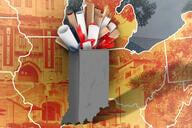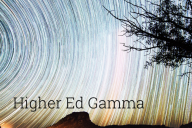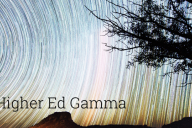You have /5 articles left.
Sign up for a free account or log in.
We all know what a great education looks like.
James Garfield, a future president of the United States, said that the ideal college education consisted of “Mark Hopkins on one end of a log and a student on the other.” Think of the classic Hollywood depictions of education, like Dead Poets Society or Mona Lisa Smile. A true education combines a passionate teacher, a small classroom and a challenging, transformative text.
But that’s not the education most of us offer. Most institutions that I’m familiar with offer large, instructor-centered classrooms that focus on the transmission of content. This is an education that is transactional, not transformative.
We can do better.
What if I were to tell you that there is a relatively inexpensive, evidence-based initiative that can help your campus:
- Identify and increase applications from diverse students.
- Raise admissions yield.
- Connect your campus to your local community.
- Enhance civic engagement.
- Promote dialogue over difficult issues.
- Revitalize the humanities.
- Significantly strengthen entering students’ writing, reading and analytic skills?
Yes, such a program exists. I urge your campuses to embrace this approach.
This initiative is the Teagle Foundation’s Knowledge for Freedom Project, which targets talented students from low-income backgrounds and historically underrepresented communities. The program, which now operates on 33 campuses, combines an intensive, immersive summer seminar for high school students with year-round college counseling.
I had the great good fortune to attend the first Knowledge for Freedom Network in-person convening, which just took place in New Haven, Conn. Attendees came from high-profile private institutions like Boston University, Columbia, Rochester, Washington U and Yale; large publics like Kent State, Miami of Ohio, Portland State, Rhode Island, Stony Brook, Texas at San Antonio and Valdosta State; liberal arts colleges including Dickinson, Elon and Hollins; and religiously aligned institutions such as Fordham, George Fox, Loyola, St. Joseph’s and Ursinus, plus a number of two-year campuses.
High points included presentations by Columbia’s Andrew Delbanco, Roosevelt Montás and Roger Lehecka; Hollins president Mary Dana Hinton; and Yale dean Tamara Szabó Gendler, as well as admissions officials, a specialist in refugee and immigrant services, a campus police chief, and a host of program alumni. Sessions dealt with such practical topics as staff training, fundraising and program sustainability, maintaining alumni networks and assessing program impact.
But the program’s true power lay in reading the participating students’ essays. Here were a few of the topics:
- What should knowledge be used for? A close reading of essays by Frederick Douglass, Booker T. Washington and W. E. B. Du Bois that compares and contrasts their conceptions of Black history and reveals their continued relevance to our own time.
- The kaleidoscope of the Asian American experience. An examination of issues involving Asian American identity in works by Cathy Park Hong, Erika Lee and Audre Lorde.
- Playing God: What Fiction Can Teach Us About AI. The promises and perils of artificial intelligence drawing upon lessons drawn from the writings of Mary Shelley and Harlan Ellison.
How does this program differ from the many existing high school outreach and bridge programs that already exist?
The most obvious difference is focus: this program foregrounds the humanities and civics, not the STEM disciplines. The initiative invites high school students from low-income and underserved communities to study humanity’s deepest questions about leading lives of purpose and civic responsibility. Each program includes an intensive seminar taught by regular college faculty focusing on transformative texts in the humanities that interrogate ideas or questions about the nature of citizenship, government, freedom and democracy and that even today to transform lives through the power of their ideas and expression. The programs also assist the students with college and financial aid applications and directs students in a civic engagement or public service project.
At the heart of this initiative is a two- or three-week on-campus summer seminar in which 15, 20, 30 or more high school students closely read and write about primary-source texts that address the big questions in moral and political philosophy involving ethics, citizenship, identity and power. The curriculum, which offers a humanistically informed civics education, typically pairs close reading of classic and canonical texts with more contemporary, culturally relevant essays or excerpts from longer works.
The seminar is supplemented by meetings across the academic year that help the students identify colleges matched to their interests, write their application essays, complete their financial aid forms and undertake a community service project.
This initiative’s secret sauce is providing high school students with the opportunity to work hand in hand with a dedicated academic mentor and “to read together, think and talk together, and discover together how the humanities can help to make sense” of the environment in which we live. These students crave rigorous intellectual engagement and find the program’s heart—crafting essays in which they explore and deliberate upon contemporary problems in dialogue with transformative texts—deeply fulfilling.
Presentations by past students and transcribed interviews by program alumni make it clear that many of the participants felt deprived—deprived of a demanding, rigorous education that took them seriously as thinking beings. I saw something similar when I was at Columbia and supported after-school programs in Harlem in philosophy and neuroscience. Attracting high school students was no problem. The single biggest cost was for the fingerprinting and background checks for the doctoral students who staffed the programs.
It’s easy for those of us blessed to teach in a college or university to be blind to the realities of K-12 education, especially in areas of concentrated poverty. Those schools don’t have college counselors. Instead, they have guidance counselors tasked with addressing the host of challenges these students confront: homelessness, stress, violence and more. The mandated curriculum is anything but stimulating and inspiring.
We need to ask ourselves, what can we do to help?
A lot, if we chose to do so. Your campus need not imitate Bard (though I wish it would) by establishing partnerships with local school districts and offering a two-year tuition-free course of study in the liberal arts and sciences that is at a genuine postsecondary level. But it should offer programs—like the Knowledge for Freedom initiative—that provide a greater intellectual challenge than most students receive in high school.
The $64,000 question facing traditional brick-and-mortar campuses is how to drive educational innovation in an environment highly resistant to change.
- Even small external grants can make a big difference. A foundation’s imprimatur is very valuable currency in negotiating with senior campus leadership. Even a small grant can offer the kind of external validation that is indispensable in generating institutional support.
- Relatively small foundations with a strategic vision can make a huge difference in inspiring transformation. The Teagle Foundation has, over the past two decades, helped drive efforts to link the humanities and the professions and to promote curricular coherence. I’m convinced that Knowledge for Freedom program will have an even bigger impact.
Equally notable are the efforts of the Gilder Lehrman Institute of American History, whose Saturday academies, summer teachers’ institutes, book talks and master’s-level courses taught by leading historians have, since 1995, created a network of 40,000 high schools, introduced thousands of social studies and history teachers to the latest scholarship, provided them with a wealth of primary sources, and advanced cutting-edge pedagogies that emphasize inquiry and close textual reading.
- Institutional transformation requires passionate faculty and supportive administrators plus models for emulation. Broad-based institutional changes rarely come from above or from below. Rather, than being top down or bottom up, transformations that extend beyond individual classrooms grow out of a conjuncture, which brings together dedicated faculty members, supportive administrators and, often, a vision that is reinforced by outside examples and encouragement.
The challenge is to reconcile the passions of individual faculty members and broader institutional goals. That’s easier said than done. It requires campuses to identify the specific problems that need to be addressed—whether recruitment and retention, career preparation, or something else—and develop a concerted plan to tackle that challenge.
- Innovation at scale is not a mission impossible. If I’ve learned anything, it’s that boutique programs aren’t scalable. Faculty inevitable retire, die, lose interest or move on. Impact needs a place to take place, and that requires a vision that goes beyond a single classroom.
- Don’t hesitate to be a copycat. There’s nothing wrong with innovators stealing from the best. For all its resistance to change, higher ed is also highly imitative. Successful models can inspire creative replication and adaptation. Few innovations can be adopted intact. Whether we’re speaking of learning analytics or one-stop advising or learning communities, innovations must adapt to specific campus realities. That requires coalitions of the willing to work together to come up with a realistic plan that meets their diverse needs.
- Innovation and institutional self-interest can align in good ways. I fear that many current reforms—including early-college/dual-degree programs or asynchronous online learning—have little to do with students’ real needs. Yes, they’re cheaper, and they may well accelerate time to degree. But whether they produce deep, durable learning is a wholly different matter.
My interest in the Knowledge for Freedom program lies, in part, in my deeply felt belief that one of the big challenges of our time is to help our students have difficult conversations over hot topics in a civil, respectful manner. It also grows out of my conviction that we need to reimagine the general education curriculum. I fear that the humanities portion of general education is in peril, threatened by the rise of early-college/dual-degree programs. Based on my experience, very few students will become art history, history, literature or philosophy majors unless they fall in love with their first college class in those fields.
Even though my campus is arguably the best-funded public university in the United States, it has jettisoned freshman composition, relegating it largely to community colleges, and now offers five-week, low-cost “accelerated” asynchronous online summer courses in the humanities portion of the core that involve little or no substantive interaction with a faculty member. The result is, in my view, disastrous. It’s manifest in students who have not learned how to write the kinds of evidence-based arguments and interpretations that are the hallmark of academic writing. This has also accelerated the flight from the humanities.
Our gen ed classes consist largely of discipline-based introductory courses that do all too little to introduce students to the elements that define the humanities in its classic meaning. Sure, our honors students, the 175 who enter what we call Plan II, take part in intensive seminars. But the overwhelming majority of freshmen, the 8,934 who aren’t in Plan II, receive mass education in classes like my 400-student U.S. history surveys, without breakout sections.
A handful of campuses do offer something different. There’s Purdue’s Cornerstone certificate program and Austin Community College’s Great Questions program, which promote a coherent, thematically integrated liberal education organized around transformative texts and discussion-based seminars. Both programs, not incidentally, received support from the Teagle Foundation.
The ACC course, taught by dozens of faculty to hundreds and taken by hundreds and hundreds of students, combines academic success training with the close reading of texts that really do transform lives. Among the great questions:
- How do individuals know what they know?
- What is justice?
- Does free will exist?
- What is love?
- Is there a supreme being or beings?
- What is beauty?
- What is our relationship to the nonhuman world?
- What is the best form of government?
- What is the good life?
Among the texts: The Aeneid, The Analects, Annihilation of Caste, Beloved, Borderlands/La Frontera, The Epic of Gilgamesh, The Epic of Sundiata, Fear and Trembling, The Federalist Papers, Genealogy of Morals, Hayy Ibn Yaqzan, Journey to the West, Lysistrata, Mahabharata/Bhagavad Gita, Peloponnesian War, Phenomenology of Spirit, The Republic, and A Vindication of the Rights of Women.
A striking example from Purdue’s Cornerstone curriculum is Cornerstones of Constitutional Law, which offers undergraduates, who mainly come from engineering and STEM fields, the opportunity to read case law to understand legal reasoning and constitutional doctrines and explore how the forces of technology, economics, politics, scientific development and medicine transform constitutional law.
I am convinced that there is a hunger for a more developmental, transformational education that is more much demanding than what we currently offer and that doesn’t merely replicate what was covered in high school.
I wholeheartedly agree with Andrew Delbanco: it’s an utter scandal that we, as a society, fail to offer every college student access to the defining elements of a liberal education: a passionate professor, a small classroom and a challenging text.
Let’s not forsake our birthright.



